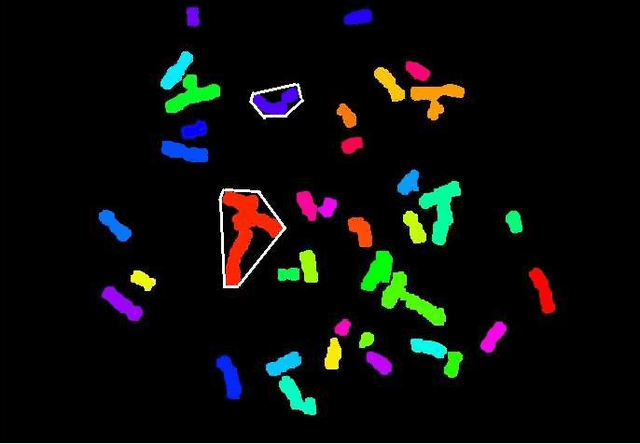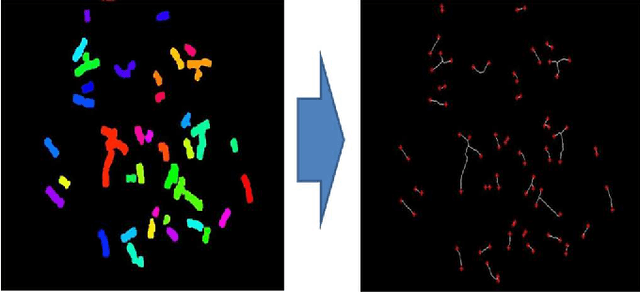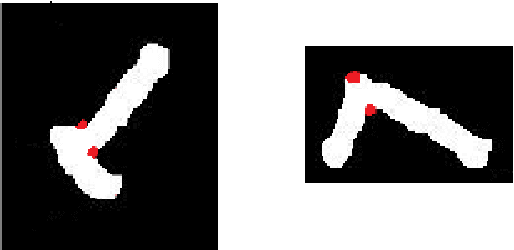A Geometric Approach For Fully Automatic Chromosome Segmentation
Paper and Code
Sep 01, 2014



A fundamental task in human chromosome analysis is chromosome segmentation. Segmentation plays an important role in chromosome karyotyping. The first step in segmentation is to remove intrusive objects such as stain debris and other noises. The next step is detection of touching and overlapping chromosomes, and the final step is separation of such chromosomes. Common methods for separation between touching chromosomes are interactive and require human intervention for correct separation between touching and overlapping chromosomes. In this paper, a geometric-based method is used for automatic detection of touching and overlapping chromosomes and separating them. The proposed scheme performs segmentation in two phases. In the first phase, chromosome clusters are detected using three geometric criteria, and in the second phase, chromosome clusters are separated using a cut-line. Most of earlier methods did not work properly in case of chromosome clusters that contained more than two chromosomes. Our method, on the other hand, is quite efficient in separation of such chromosome clusters. At each step, one separation will be performed and this algorithm is repeated until all individual chromosomes are separated. Another important point about the proposed method is that it uses the geometric features of chromosomes which are independent of the type of images and it can easily be applied to any type of images such as binary images and does not require multispectral images as well. We have applied our method to a database containing 62 touching and partially overlapping chromosomes and a success rate of 91.9% is achieved.
 Add to Chrome
Add to Chrome Add to Firefox
Add to Firefox Add to Edge
Add to Edge